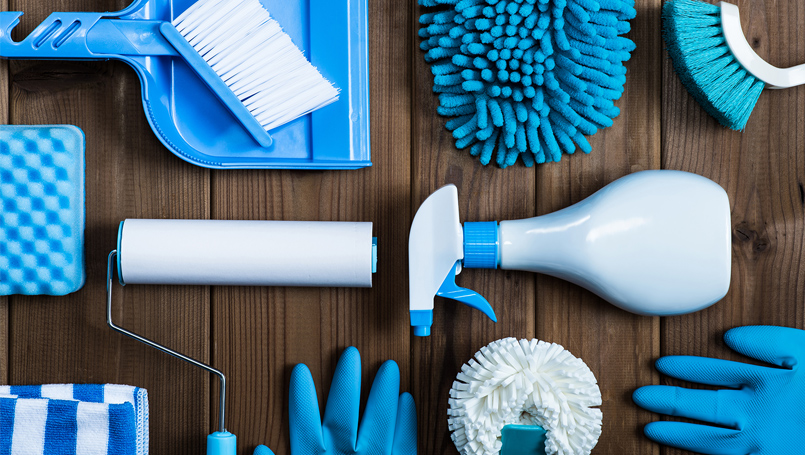
If you’ve just kicked your cold or flu, the last thing you want is to infect others in your household. These viruses can be spread through a handshake, cough, sneeze or simply touching a contaminated item.
The flu virus can live on surfaces for several hours - longer on penetrable surfaces like blankets, washcloths or towels - so it’s increasingly important to make sure you’re decontaminating your house thoroughly.
"People think that they have to clean and disinfect their entire house after someone in their home has had a cold or the flu," says Katie Brasher, a Clinical Infection Preventionist at Beaumont Hospital, Royal Oak. "This is a great goal, but it’s not necessary. You will want to focus your attention on shared spaces and surfaces that are frequently touched."
Disinfecting items like the bathroom sink or kitchen counter may be common practice, but don’t forget these frequently used items that may be overlooked:
HAND TOWELS / BATHROOM RUGS
Towels and sheets often make it into the regular washing cycle, but when it comes to catching all the contaminates, don’t neglect the hand towels and bathroom rugs. Just think of all the use that a hand towel gets in one day. It’s recommended hand towels are washed every two or three days and every one or two weeks for bath mats.
COMPUTER KEYBOARDS
Everybody knows that the TV remote is one of the top germ offenders in the house, but just as often used and sometimes forgotten is the computer keyboard. Make sure the keyboard is disconnected and use a slightly damp cloth to wipe the keys and keyboard. Use a can of compressed air to clear the particles and dust from between the keys as well. For an added layer of clean, use a cotton swap dipped in rubbing alcohol on the tops of the keys.
CELL PHONE / TABLET
Probably the most used items in your home – your personal electronics. Luckily, most devices come with specific cleaning instructions, but there are also a variety of tested, cleaning products that can be used to clean your screens. Disinfecting is recommended at the end of each day or two.
GARBAGE CANS / LAUNDRY BINS
We toss in our dirty items, but how much attention do we pay to the container it’s going in? Think about the clothes you spent your sick day lounging in or all of the tissues you used during the day and spend a few minutes sanitizing your trashcan and laundry bin. Don’t forget the inside lid!
Brasher adds, "Make sure that the disinfectant product you're using is effective against cold and flu viruses by checking the label. Use disposable paper towels or disposable disinfectant wipes, as opposed to sponges or washcloths that tend to spread germs around."
It’s also important to remember practicing good hand hygiene can help prevent many of these seasonal. As a general rule, it’s advised to wash your hands (at least 20 seconds with soap and water):
- before eating
- before inserting/removing contact lenses
- before handling/preparing food
- before touching hands, eyes, mouth
- after using the bathroom
- after changing a diaper
- after sneezing, coughing, blowing your nose
- after touching animals/pet toys
- after touching a sick person
If a sink isn't available, an alcohol-based hand sanitizer that contains 60 to 95% alcohol is also effective.
Flu season peaks anywhere from late November through March, so remember to continually disinfect your dwelling and, as the weather permits, open up the windows for a little bit of fresh air and increased airflow.
5 germiest places to avoid during flu season
Dr. Matthew Sims, director of Infectious Disease and Research at Beaumont Hospital, Royal Oak, was featured on The Now Detroit discussing the flu virus and the germiest places to avoid during flu season.
